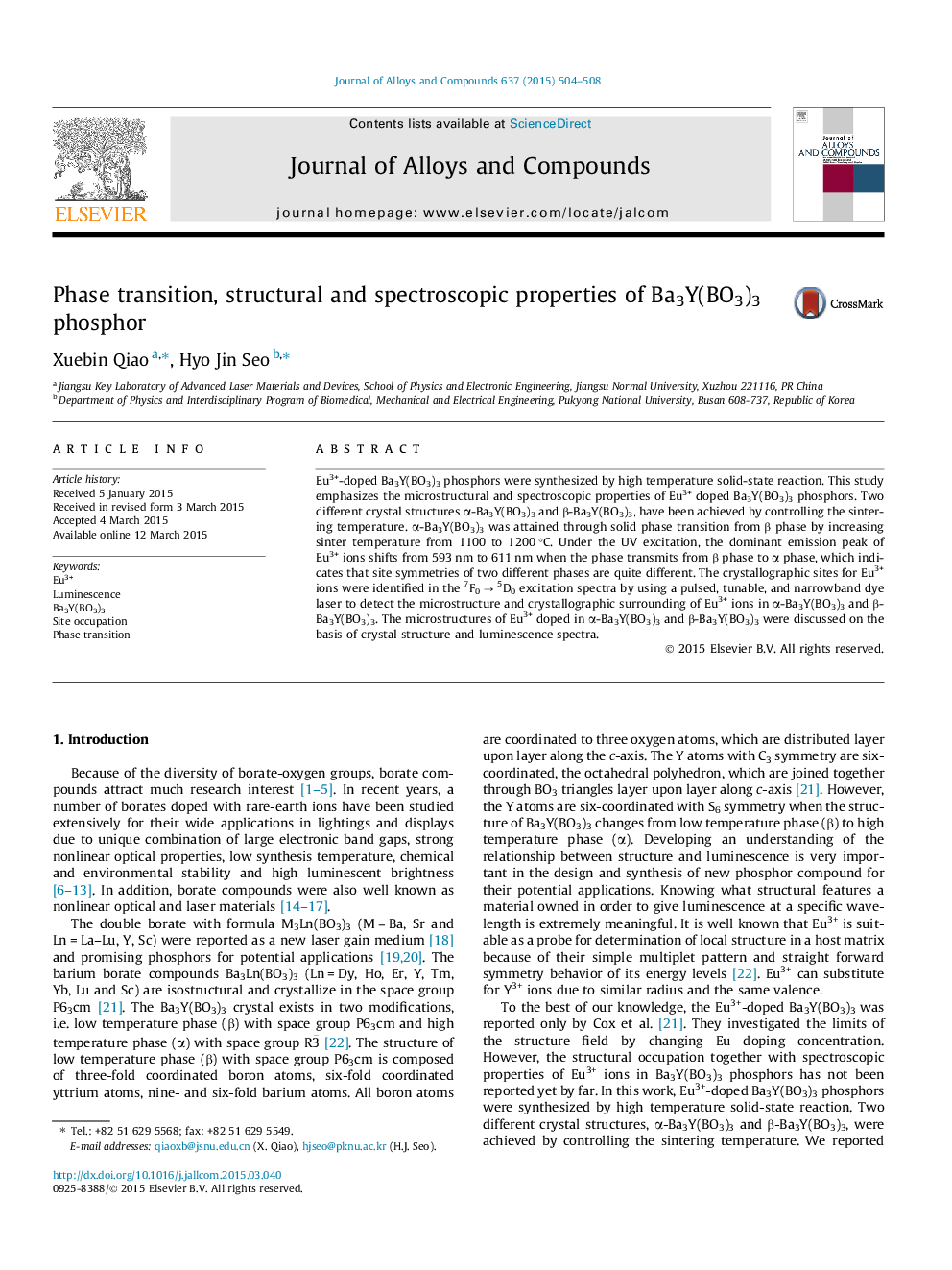| Article ID | Journal | Published Year | Pages | File Type |
|---|---|---|---|---|
| 1609530 | Journal of Alloys and Compounds | 2015 | 5 Pages |
•Eu3+-doped α-Ba3Y(BO3)3 and β-Ba3Y(BO3)3 were synthesized.•The crystal field strength on Eu3+ in α phase was stronger than that in β phase.•Eu3+ ions in β-Ba3Y(BO3)3 tended to substitute Y3+ ions with C3 symmetry.•Eu3+ ions in α-Ba3Y(BO3)3 preferred to substitute Y3+ ions with C1 symmetry.
Eu3+-doped Ba3Y(BO3)3 phosphors were synthesized by high temperature solid-state reaction. This study emphasizes the microstructural and spectroscopic properties of Eu3+ doped Ba3Y(BO3)3 phosphors. Two different crystal structures α-Ba3Y(BO3)3 and β-Ba3Y(BO3)3, have been achieved by controlling the sintering temperature. α-Ba3Y(BO3)3 was attained through solid phase transition from β phase by increasing sinter temperature from 1100 to 1200 °C. Under the UV excitation, the dominant emission peak of Eu3+ ions shifts from 593 nm to 611 nm when the phase transmits from β phase to α phase, which indicates that site symmetries of two different phases are quite different. The crystallographic sites for Eu3+ ions were identified in the 7F0 → 5D0 excitation spectra by using a pulsed, tunable, and narrowband dye laser to detect the microstructure and crystallographic surrounding of Eu3+ ions in α-Ba3Y(BO3)3 and β-Ba3Y(BO3)3. The microstructures of Eu3+ doped in α-Ba3Y(BO3)3 and β-Ba3Y(BO3)3 were discussed on the basis of crystal structure and luminescence spectra.
